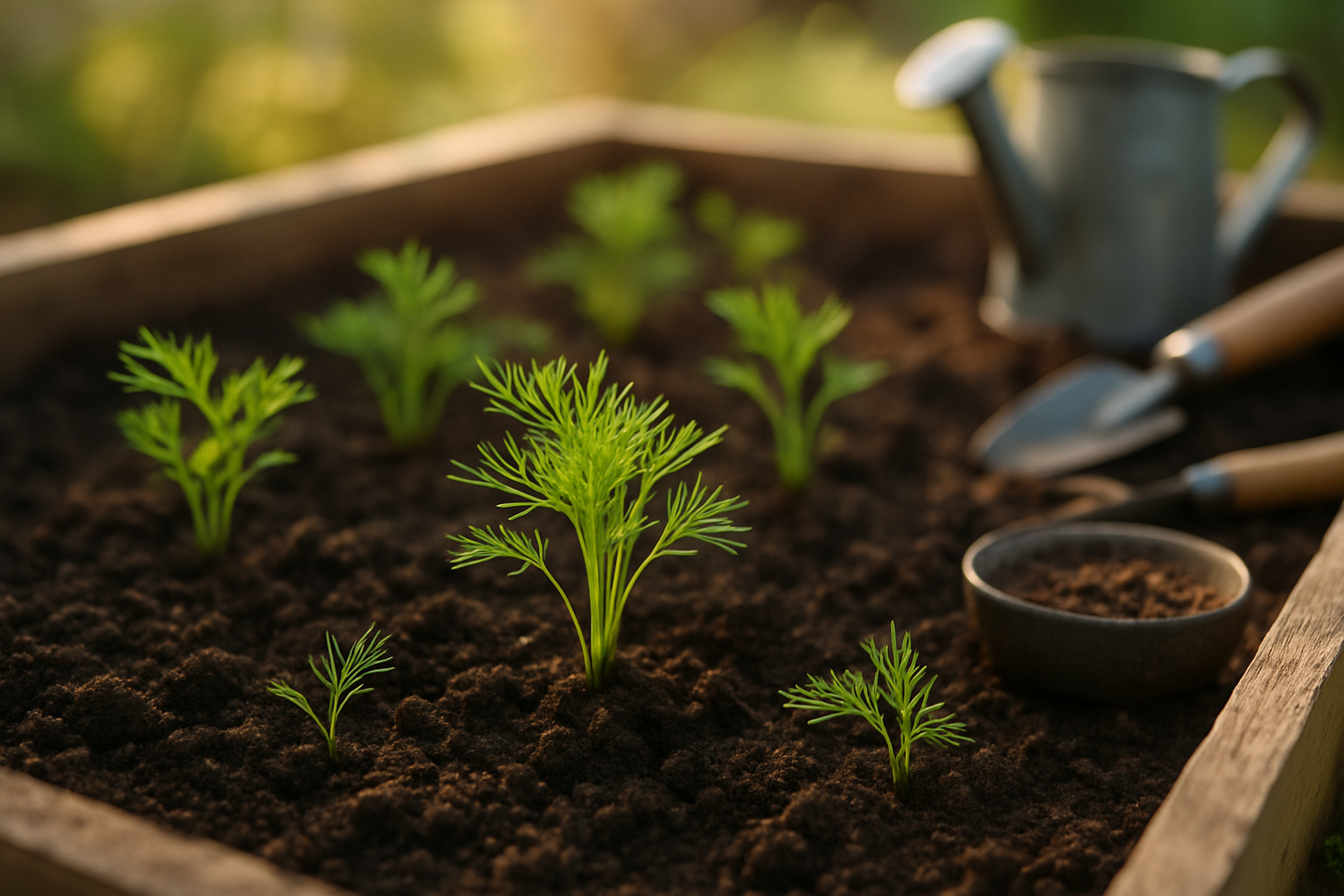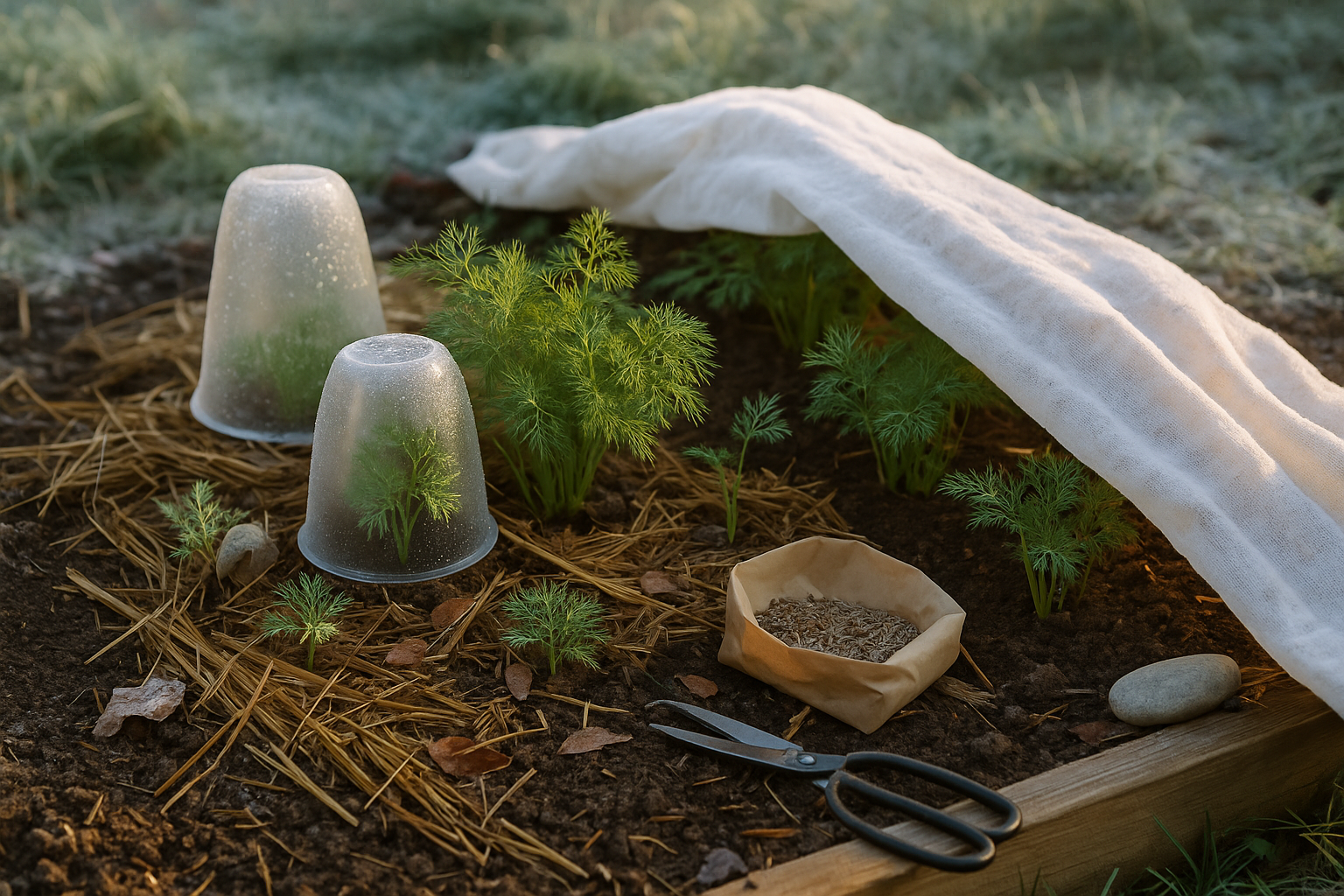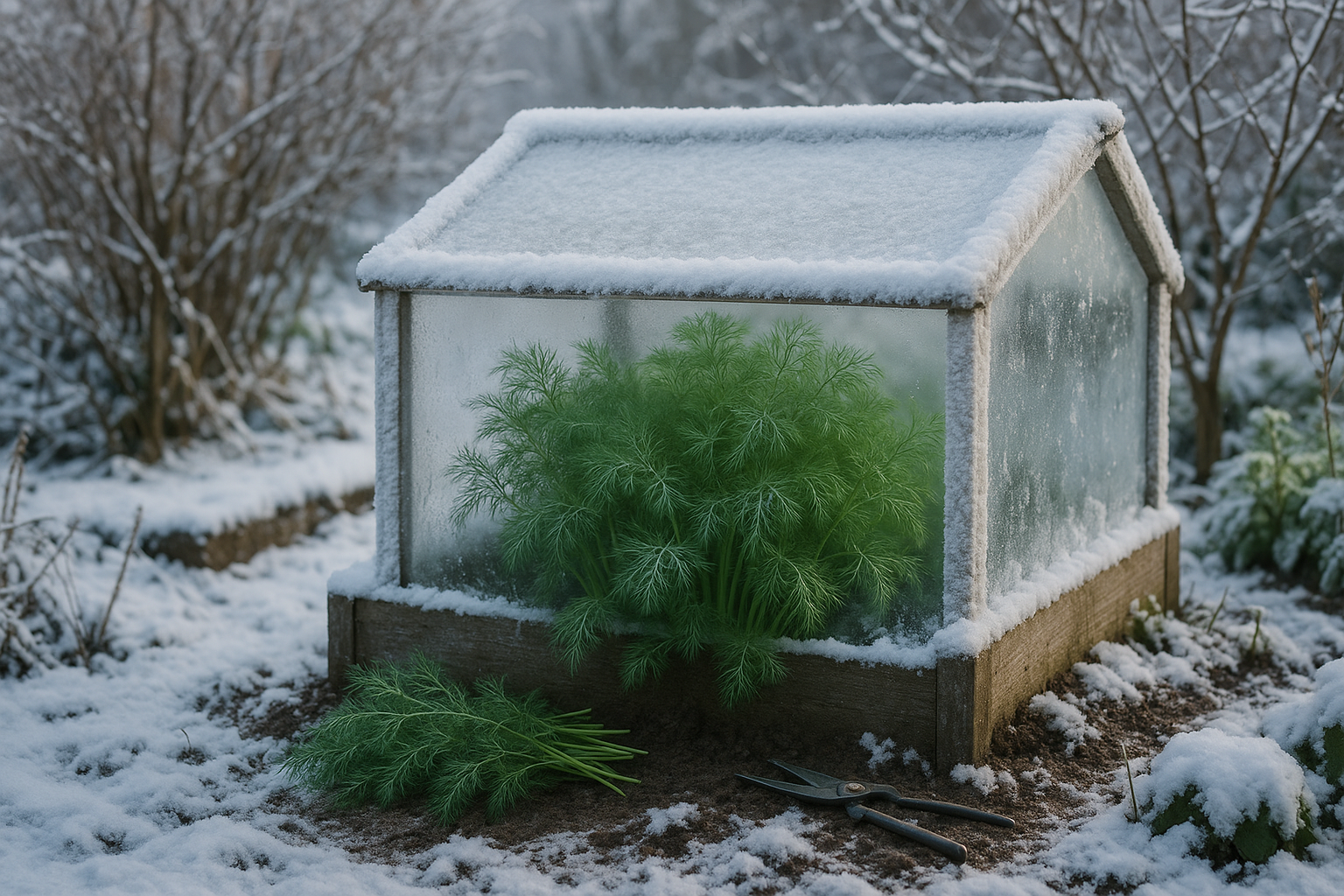Introduction
Dill in winter might sound like an impossible dream for many gardeners, especially those living in colder climates. This feathery, aromatic herb is a favorite in kitchens around the world, adding distinctive flavor to pickles, fish dishes, and fresh salads. Its easy growth habit makes it a staple in many home gardens—at least during the warmer months.
But what happens when the temperatures drop below freezing and snow covers the ground? Growing dill in cold climates comes with a unique set of challenges. Frost-sensitive and sun-loving, dill doesn’t naturally thrive when faced with chilly winds or hard frosts. Yet determined gardeners have found creative ways to keep this culinary favorite thriving even in winter.
From choosing the right location—like a sunny windowsill or insulated greenhouse—to using protective row covers and cold frames, there are practical strategies that can extend dill’s growing season. Whether you’re hoping for fresh dill fronds in your winter stews or looking to save seeds for next year, understanding the basics of winter protection, timing your sowings, and selecting cold-hardy varieties can make all the difference.
In this post, we’ll explore exactly how you can enjoy lush, fragrant dill all year round, no matter where you live.
Understanding Dill’s Growing Needs

Dill thrives when its basic needs are met, and understanding these is key to growing healthy, productive plants. Dill prefers loose, well-draining soil that is rich in organic matter—think compost-enriched garden beds or quality potting mix for container gardeners.
It does best in a spot that receives full sun, as at least six hours of direct light daily helps the plant develop sturdy stems and flavorful leaves. Temperature is another crucial factor—dill germinates best when soil temperatures are above 60°F (15°C), and throughout its growing season, it flourishes between 65°F and 75°F (18°C to 24°C).
Cooler climates pose specific challenges: late spring frosts can damage or kill seedlings, and prolonged cold slows leaf growth and delays flowering, making your dill less productive. Among the plant’s life stages, germination is especially sensitive to cold; seeds struggle to sprout in chilly, wet ground. Young seedlings, just after sprouting, are also vulnerable to cold snaps and frost.
While mature dill can tolerate short periods of cool weather, sustained chill during flowering can reduce seed production and lead to spindly growth. In cooler regions, starting dill indoors or using row covers to protect young plants can give you a head start.
For gardeners dealing with a short summer, sowing seeds in late spring—when soil has warmed—is usually your best bet to ensure strong growth and a good harvest. Remember, choosing the right time and conditions to plant will help dill’s natural hardiness shine, giving you lush leaves for cooking and plenty of seeds for pickling or next year’s crop.
Best Planting Times and Methods for Cold Climates
Gardening in cold climates comes with its own set of challenges, especially when it comes to timing your plantings for maximum yield during a short growing season. To give your crops a head start, begin seeds indoors six to eight weeks before your area’s last expected frost date. This is especially important for warm-season vegetables like tomatoes, peppers, and eggplants, which need a long growing period.
Using seed trays or small pots and placing them near a sunny window or under grow lights helps your seedlings develop strong roots before facing the outdoors.
For hardy crops such as lettuce, kale, and spinach, you can sometimes use season extenders like cold frames, cloches, or row covers to plant a few weeks earlier than usual. These tools protect young plants from late frosts and give you an earlier harvest. Cold frames are simple, transparent covers that trap solar heat and keep the soil warmer, while row covers act as light blankets to shield seedlings from chilly air.
When possible, direct sowing—planting seeds directly into the garden—is great for root crops like carrots and radishes since they don’t transplant well. However, for more tender or slow-growing plants, transplanting seedlings that you’ve started indoors gives you a valuable head start. Just remember to “harden off” your seedlings by gradually exposing them to outdoor conditions for about a week before transplanting to reduce transplant shock.
Many northern gardeners find that a mix of direct sowing and transplanting produces the best results: direct sow robust greens and root vegetables as soon as the soil is workable, and transplant more delicate or long-season crops after the last frost.
By combining these methods and using season-extending tools, you can maximize your harvest despite a short growing window, making the most of every available planting day.
Caring for Dill Through the Cold

Protecting your dill plants when temperatures drop is essential, as dill is sensitive to frost and sudden cold snaps. Start by applying a generous layer of organic mulch—such as straw, leaves, or compost—around the base of your dill plants. Mulch acts as a natural blanket, insulating roots and stabilizing soil temperatures against overnight chills.
In areas prone to heavy frost, consider using cloches, which are simple plant covers made from plastic bottles or specialty garden domes. These mini-greenhouses trap heat and shield delicate foliage from icy air; just remember to open them during the daytime to prevent overheating and allow airflow.
For unexpected cold snaps, old bed sheets or frost blankets draped lightly over the dill can offer extra protection, especially when secured against wind.
When it comes to watering, scale back to prevent soggy roots—cold soil holds water longer, and dill dislikes sitting in wet conditions. Give your plants a thorough soak only when the top inch of soil feels dry, preferably in the morning so excess moisture can evaporate before temperatures drop overnight.
Fertilize sparingly in colder months, as dill’s growth naturally slows and too much fertilizer can stress plants or promote soft, frost-sensitive growth. Choose a balanced, diluted liquid fertilizer and feed only once a month, if needed.
For gardeners in climates with persistent freezes, try growing dill in containers that can be moved indoors or into sheltered spaces during cold spells.
With these simple steps, you’ll help your dill survive and even thrive through the chilly season, ensuring your herb garden remains productive and vibrant.
Harvesting and Using Dill in Cold Areas
For gardeners in cold regions, timing is key when harvesting dill due to short growing seasons. Begin picking fresh dill leaves, known as dill weed, as soon as the plants have at least 4–5 leafy stems, usually about 6 to 8 weeks after sowing. Snip leaves in the morning for the brightest flavor, and continue harvesting until the plant bolts, or sends up flower stalks.
If your main goal is seeds, let some plants flower and watch for the umbrella-shaped heads to turn brown—a sign the seeds are ripe. Pick seed heads quickly before cold snaps or rain, and dry them upside down in paper bags indoors, catching seeds as they fall.
To preserve dill for winter use, try air-drying leaves by spreading them out on a screen or hanging small bundles in a breezy, shady spot. Another simple method is freezing: rinse and pat leaves dry, then chop and store them in airtight bags or blend with a bit of oil into cubes for soups and stews.
Culinary Uses in Cold Climates
Gardeners in chilly areas can add fresh or frozen dill to:
- Potato salads
- Homemade pickles
- Creamy sauces for cold-water fish like salmon and trout
Dill pairs especially well with root vegetables—a hearty roasted carrot and potato medley with dill and garlic is a comforting, cold-climate-friendly side dish. Even dill seed can be useful, lending its tangy flavor to bread, sauerkraut, or spice blends that brighten the winter table.
Overwintering and Perennial Options
If you’re growing dill in a cold zone, you might wonder if this feathery herb can survive the winter. Dill is technically an annual and typically won’t overwinter outdoors in regions with hard frosts. However, it often self-seeds generously.
Let a few dill plants bolt and go to seed at the end of the season. The seeds will naturally fall into the soil, and with luck, you might spot fresh dill seedlings sprouting once spring arrives—even after a snowy winter.
If you want a more reliable supply through the colder months, indoor cultivation is your best bet. Dill grows well in pots placed on a sunny windowsill, ideally one that receives at least six hours of light per day. Use well-draining potting mix and water when the top inch feels dry.
If a sudden frost damages outdoor seedlings or returning dill, cut back any blackened or mushy foliage and feed the plant with a light, balanced fertilizer to encourage a quick rebound.
Mulching around the base of outdoor plants in late fall can also provide extra protection, giving your dill a better chance of surviving or self-seeding for next year’s harvest.
Conclusion & Troubleshooting Common Problems
Growing dill in cold climates can be extremely rewarding, but it often comes with unique challenges. Start by choosing hardy dill varieties and sowing seeds directly into well-draining soil after the last frost. Protect young plants from unexpected chills with row covers or cloches, especially during late spring cold snaps.
Common issues include aphids, which can be sprayed off with a strong stream of water, and fungal diseases like powdery mildew—avoid these by watering at the base and ensuring good air circulation. Yellowing or stunted growth may signal cold stress or poor soil; add mulch to regulate temperature and work in compost for a nutrient boost.
If seedlings become leggy or fall over, they may be reaching for light—move them to a sunnier spot. With a little preparation and prompt care, even gardeners in chilly regions can enjoy healthy, flavorful dill throughout the growing season.
